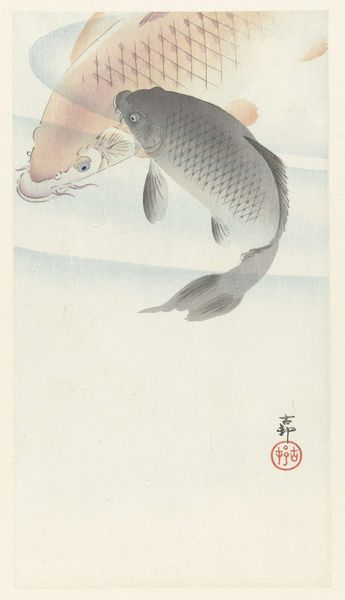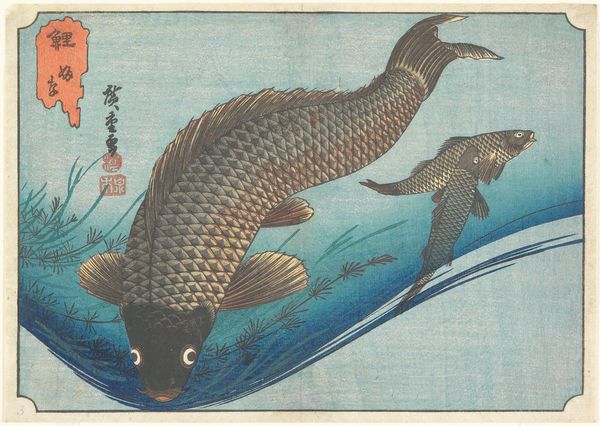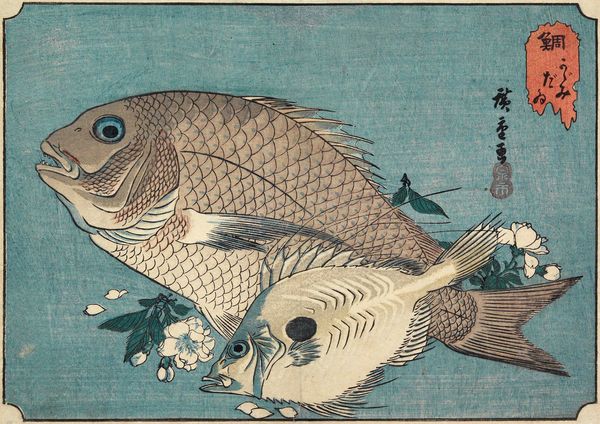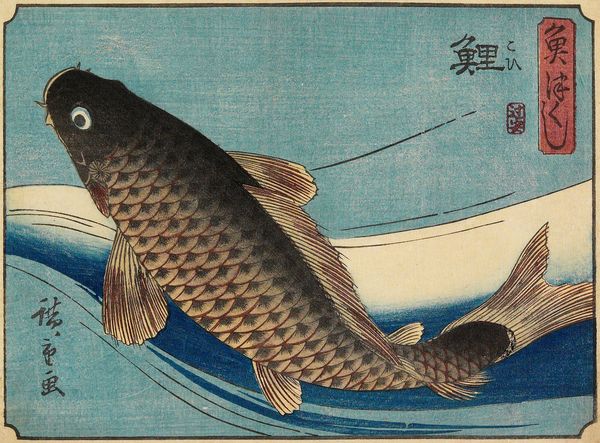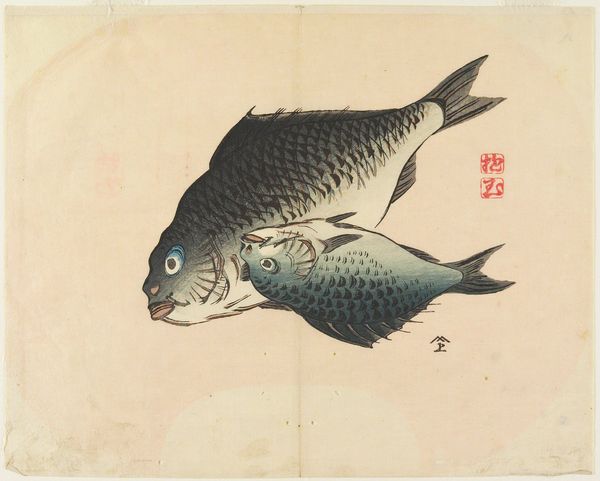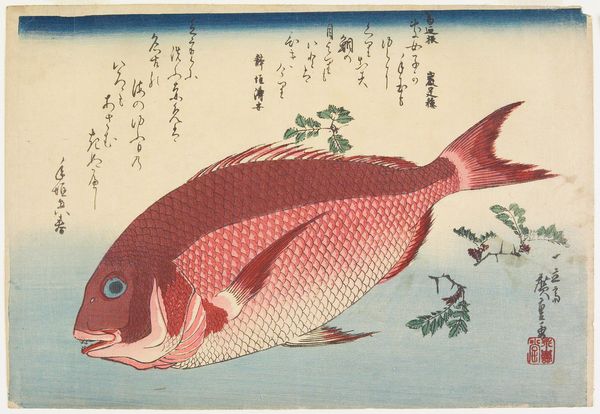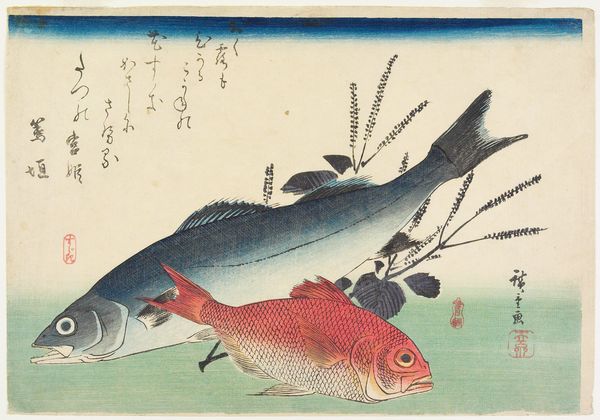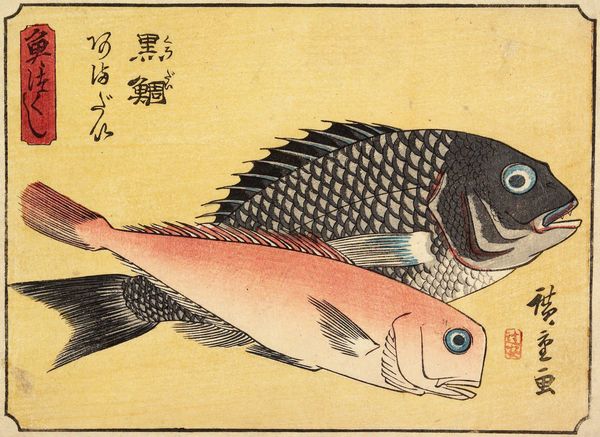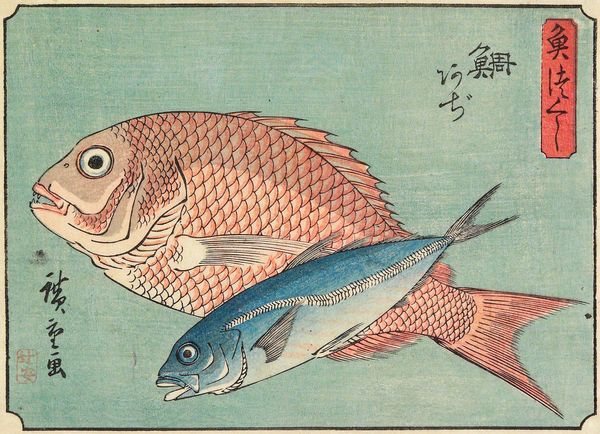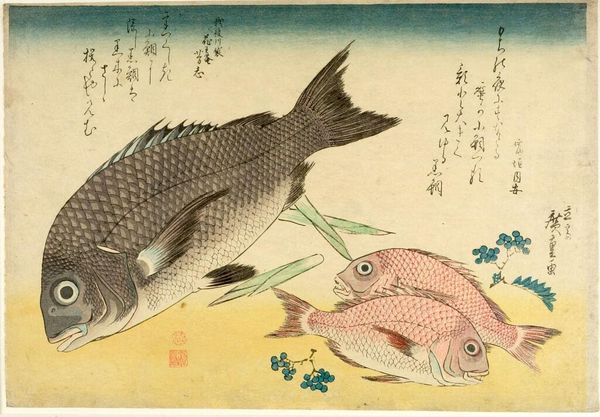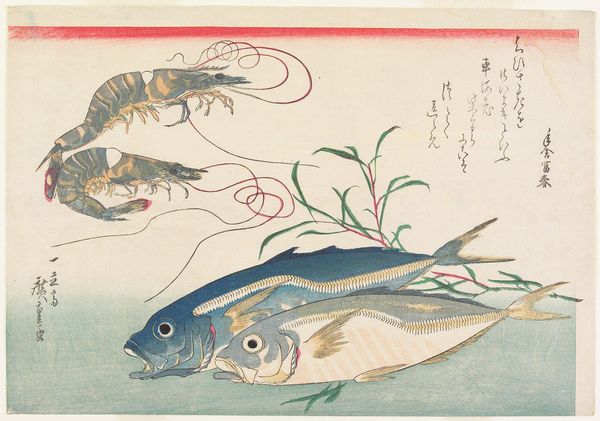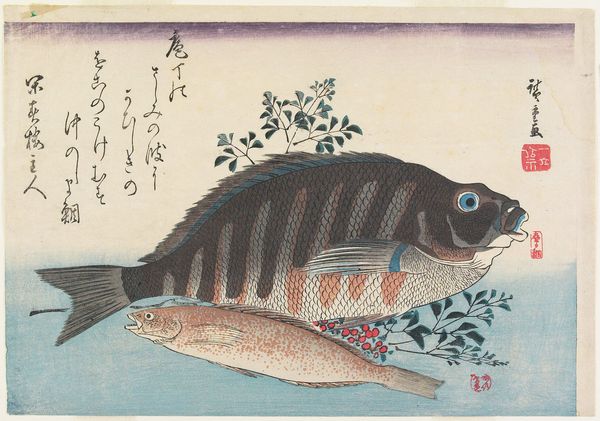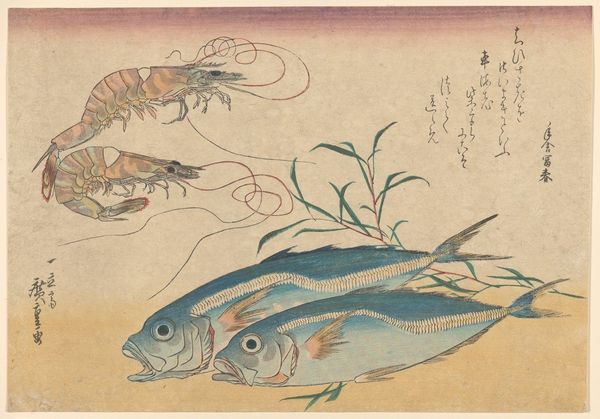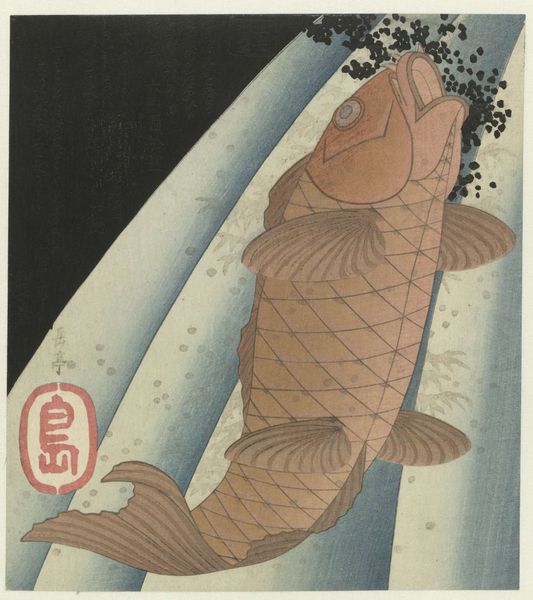
Copyright: Public domain
Curator: What a graceful piece! This is “Two Koi Carps” by Ohara Koson, dating back to around 1910. It appears to be a watercolor on paper. Editor: Yes, it strikes me as rather calming. The light blues of the water, the soft forms. Though simple in composition, the placement of the fish gives a strong sense of depth. Curator: Precisely! Koson was known for his mastery of *kacho-ga*, images of birds and flowers, but here we see him expanding his repertoire, showcasing the movement and texture of fish. The medium used certainly lends to its airy, fluid feeling. The thin washes create translucent forms and allow layering of detail to give each fish weight. Editor: I wonder about the influence of ukiyo-e on Koson’s work and how prints of this nature were consumed by both domestic and Western audiences eager for Japonisme. Considering these pieces as commodities helps illuminate their social trajectory and lasting influence. Curator: Good point. It is clear he tapped into the aesthetics popularized by earlier printmakers but streamlined the production with more painterly methods to broaden accessibility in the market. This, no doubt, required shifting relationships between Koson, his publishers, and distributers during the period. Editor: How do we view such commercially viable art within the traditional art history framework, then? Was it a deliberate engagement with "high" art, or rather, something else entirely, born of a need to provide something to satisfy market forces of the time? Museums acquire these today… Where do we see its value? Curator: The very question challenges those established boundaries! This challenges the definition of 'original' versus 'reproduction', the notion of labor that went into crafting woodblocks versus brushwork. I'd say its value now lies not just in aesthetic enjoyment, but in prompting these inquiries. Editor: A piece prompting conversations is never stagnant, always of the moment in many different moments. Curator: I concur entirely. This gentle image continues to stir debate on labor and aesthetics to this day.
Comments
No comments
Be the first to comment and join the conversation on the ultimate creative platform.
